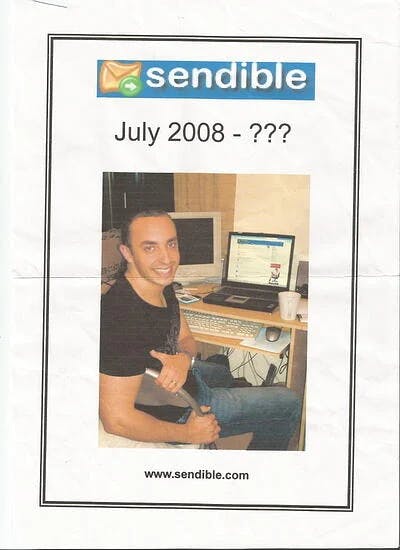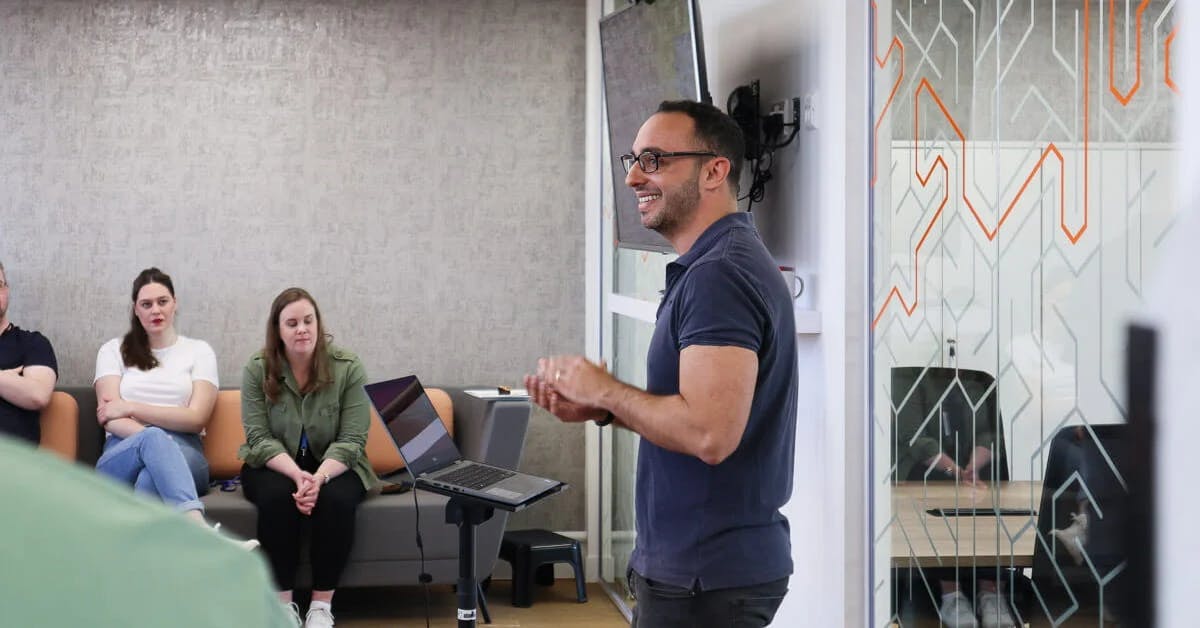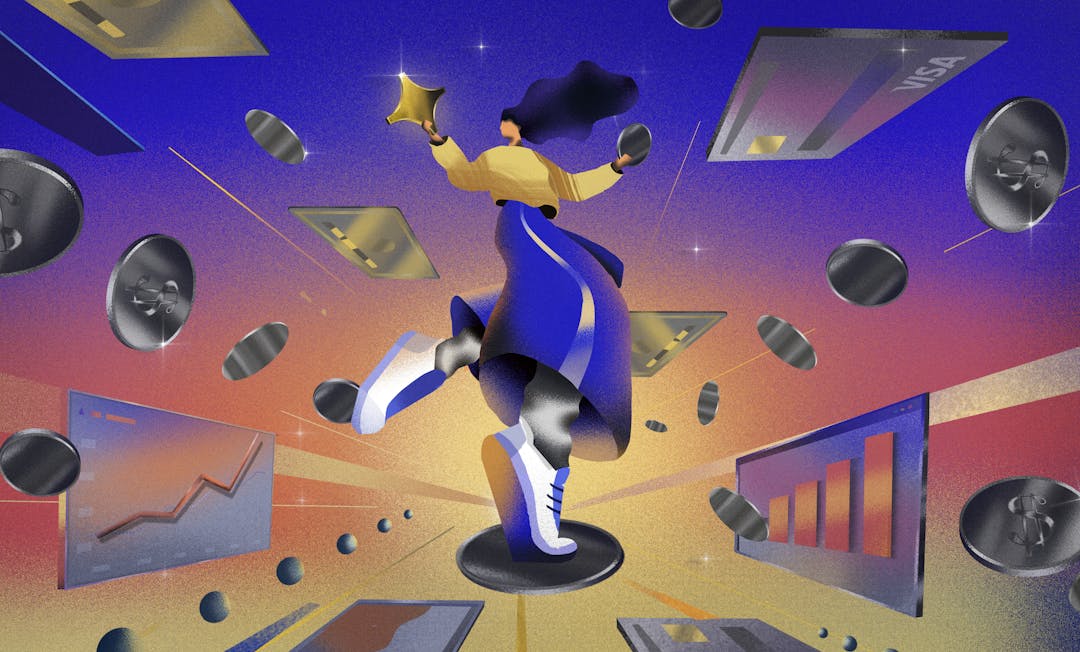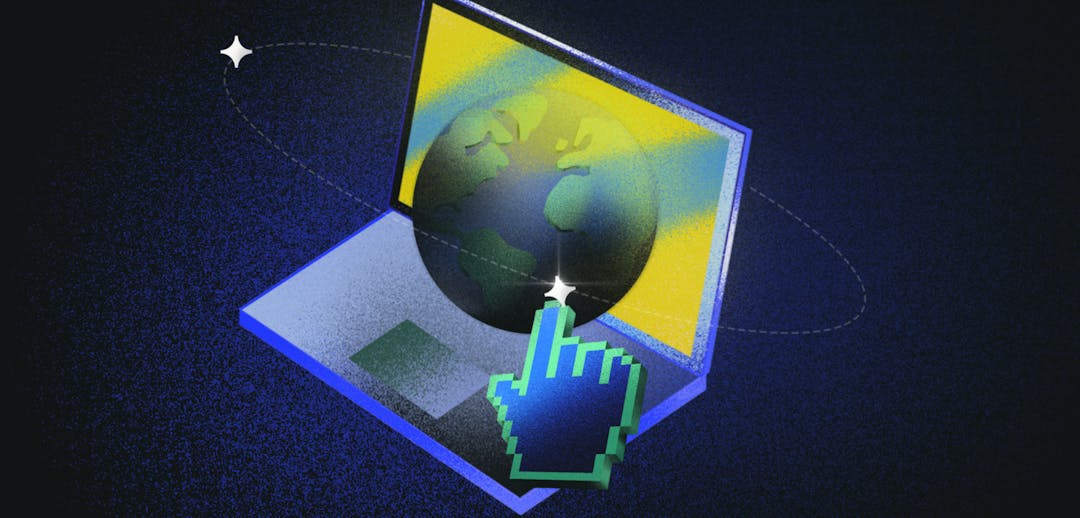The last 13 years have been the most challenging and rewarding of my life. Sendible started as a little Windows application that I developed on the side to help my dad schedule emails to his employees on their birthdays.
After spending a few months hacking it together in my spare time, I started to notice more and more social networks cropping up. Whenever I saw a new platform start to gain traction, I would integrate it into the software.
Soon, it became much more than just an email scheduler. It made SENDing any type of message possIBLE: Facebook, Twitter, LinkedIn, MySpace (RIP 💀 ) – you name it!
In the middle of 2008, I decided I wanted the world to try it. So, I bought a second-hand server for £10, plugged it into my home router, and boom – Sendible.com was born.

Since then, we’ve seen:
- Over 300 thousand people try the platform
- Over 2 million social profiles connected
- Over 200 million posts published
Watching Sendible beat the odds as a bootstrapped company in a hyper-competitive space and go on to become a market-leading social media management platform has been the highlight of my career.
Today, Sendible is growing faster than ever before, with record new customers signing up each month. We have a fantastic product that just keeps getting better, and our team of all-stars is executing at an efficiency I’ve never seen before.
But when I started Sendible all those years ago, I never imagined I’d be entering one of the most competitive markets in tech. With 245 competitors, some of whom have raised hundreds of millions in venture capital, my little self-funded startup should never have survived.
Yet, we’ve gone on to be recognized as one of the top 4 social media management tools in the world. And recently, we made the list of top 20 marketing products of 2021 .
How was this possible? How could a tiny company with fewer than 50 employees and zero investment achieve so much?
This was the very question I asked myself after we were acquired earlier this year.
I'd love to say that I could share the specific tactics or strategies that got us here. But, there's no one size fits all. What worked for me may not work for you.
So, instead, here are 3 of the mental models I adopted that were instrumental in helping me make the decisions that led to our success and ultimately resulted in a life-changing acquisition.

1) Don't settle for best practices
Most people blindly follow common best practices as prescribed. It feels safe. And for a long time, I had the same mentality: “surely, if it’s been written about in a book, it must be the best way”.
But I’ve discovered that the practices that can most significantly propel your business forward are the ones that no one ever talks about.
Maybe they’re just too good to share. Or perhaps, the people who discovered them are so successful, they have no desire to write the book.
But, common best practices are just that. Common. And they are only a potential list of practices to choose from, they're not ALL the practices.
For me, the practices that have consistently delivered the best results are the ones I discovered on my own, through my sheer curiosity and willingness to experiment.
I’ve never had any investors. I’ve also never had a mentor. But what I’ve always had is the freedom and confidence to challenge the status quo – without fear of failure.
As a result, I’ve made a lot of mistakes over the years. But it has been those mistakes that most often led to my greatest successes.
As Walt Disney once said, "No-one ever made a difference by being just like everyone else". So, instead of trying to keep up with your competitors, be something they aren't.
2) Be the most human company in your category
When our competitors were adding more automation, introducing bots, and exponentially increasing ad spend to take more market share, at Sendible, we were repositioning ourselves as the more authentic, human alternative.
It was our only option. As a bootstrapped company, we just didn’t have the resources to compete at the same scale. And I believed that our competitive advantage needed to come from the fact that we were smaller, more approachable, and that we could deliver a better customer experience.
So, I examined every touchpoint in our customer journey and came up with innovative and unscalable new ways to make our customers feel truly special.
I wanted them to know that they weren’t just signing up for another SaaS platform, but that they were being welcomed as members of the Sendible family.
And it really paid off.
Not only did we start to receive rave reviews from our customers, but they started to recommend us. Suddenly, we were breaking our own records for the number of new customers signing up each month!
That’s when I realized that you don’t need to raise hundreds of millions in funding or add more AI to be truly memorable in a noisy world. You just have to be the most human company in your category.
So, instead of hiring more sales reps to sell to people who don't want to be sold to, invest in delighting your customers and building brand affinity.
3) Adopt second-order thinking
We’re living in an attention economy and the new currency is trust. But earning trust takes time. You have to build a brand. You have to consistently deliver on promises. There are no shortcuts.
But very few of us are willing to take the time to consider the second-order effects. In other words, the effects-of-the-effects.
It's human nature to constantly seek instant gratification. And that's why most of your competitors aren't focused on the long-term - especially the ones who have raised funding and are under pressure to make a return for their investors within 3 years.
So, to gain an advantage, you need to adopt second-order thinking. This is where the best opportunities for you to stand out from your competitors can be found.
Not only is this mental model a great way to think about investing in the long term, but it also provides us with a framework for trust-based marketing.

As we know, trust and trustworthiness are the results of many interactions over time. However, when you adopt second-order thinking, you are willing to forgo the immediate rewards in order to maximize future gains.
Yes, it might be unscalable in the short term. But you recognize that it’s a necessary sacrifice to be able to reap consistent benefits in the long run.



